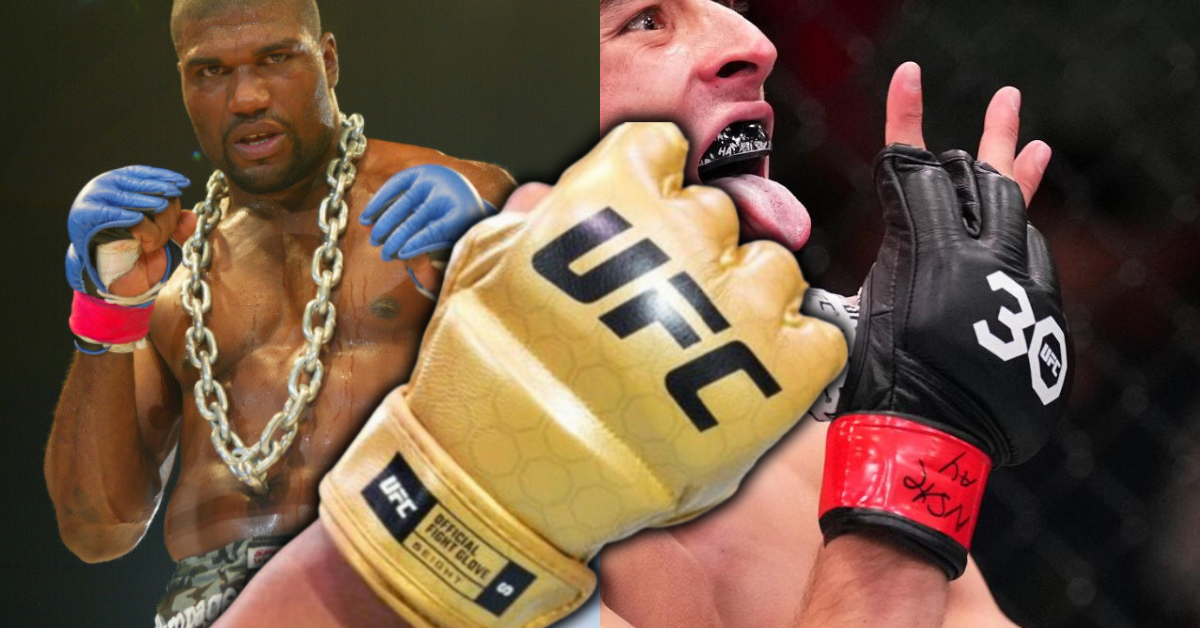The Ultimate Guide to MMA Gloves: Everything You Need to Know

03/30/2025 02:05 PM
MMA gloves are a vital part of the sport's evolution. Balancing striking power with grappling functionality. From bare-knuckle beginnings to today's high-tech designs, MMA gloves have shaped how fighters train and compete. Whether you're hitting pads or stepping into the cage, choosing the right glove, and using it correctly, can make all the difference in performance and safety. Let’s outline everything you need to know about MMA gloves.
From Bare Knuckles to Modern Gloves
In the early days of MMA, fighters often competed bare-knuckled, as seen in the first UFC events in the 1990s. While this raw approach added to the spectacle, it led to frequent hand injuries and gruesome facial cuts. To address safety concerns and professionalize the sport, open-finger gloves were introduced in the mid-1990s. These gloves typically weighed 4 to 6 ounces and allowed fighters to strike while maintaining the dexterity needed for grappling. Tank Abbott was the first to wear this style of gloves in the octagon.
The UFC mandated gloves starting at UFC 14, and their design has remained largely consistent for decades. However, incremental improvements have been made over time, such as better padding for knuckle protection and wrist support.
New UFC Gloves
In 2024, the UFC introduced redesigned gloves with features like fewer seams (to reduce cuts), more flexible fingers (to prevent eye pokes), and even NFC chips for memorabilia authentication. Despite these innovations, some fighters criticized the fit and comfort, leading to their discontinuation in early 2025. The UFC reverted to its classic glove design after complaints from athletes like Jon Jones highlighted issues with usability.
PRIDE MMA Gloves
The PRIDE FC in Japan used gloves that many fighters still regard as superior. These gloves feature an elongated finger design that naturally curved the hand into a fist, reducing accidental eye pokes. They also provided excellent knuckle protection while maintaining flexibility for grappling. Some modern brands have recreated this style for nostalgic fans and collectors.
However, these gloves used individual ringlets and laces to stay on. These laces would often come undone and the finger ringlets would have fingers slip out. While they did avoid eye pokes, there were frequent pauses to the action to fix glove malfunctions.
Trevor Wittman's MMA Glove Design
Renowned MMA coach Trevor Wittman developed gloves aimed at addressing common issues like eye pokes and broken fingers. His design keeps fighters' hands in a natural fist position while improving comfort and reducing injuries. While praised by many, these gloves haven't been widely adopted by promotions such as the UFC.
MMA Gloves vs. Boxing Gloves
MMA gloves weigh around 4 ounces for competition (and up to 7 ounces for sparring), they feature open fingers for grappling and minimal padding to allow faster strikes. Boxing gloves are heavier (12–16 ounces) with extensive padding to protect hands during repeated punches. They fully encase the hand, making grappling impossible.
While MMA gloves allow for versatility in striking and grappling, they offer less knuckle and wrist protection compared to boxing gloves. This makes them less ideal for heavy bag training unless paired with proper hand wraps.
Common Questions on MMA Gloves
Do you wear hand wraps under MMA gloves?
Yes. Always wear hand wraps under your gloves to protect your knuckles and wrists from injury. An athlete can easily break their hand without the use of hand wraps.
How much do MMA gloves weigh?
Competition gloves weigh around 4 ounces, while sparring or hybrid training gloves can weigh up to 7 ounces depending on their purpose. In a UFC fight, they are 4 ounces.
Are MMA gloves good for punching bags?
While you can use MMA gloves on a heavy bag, they lack the padding needed for prolonged sessions. For safety, consider using specialized bag gloves or boxing gloves instead.


